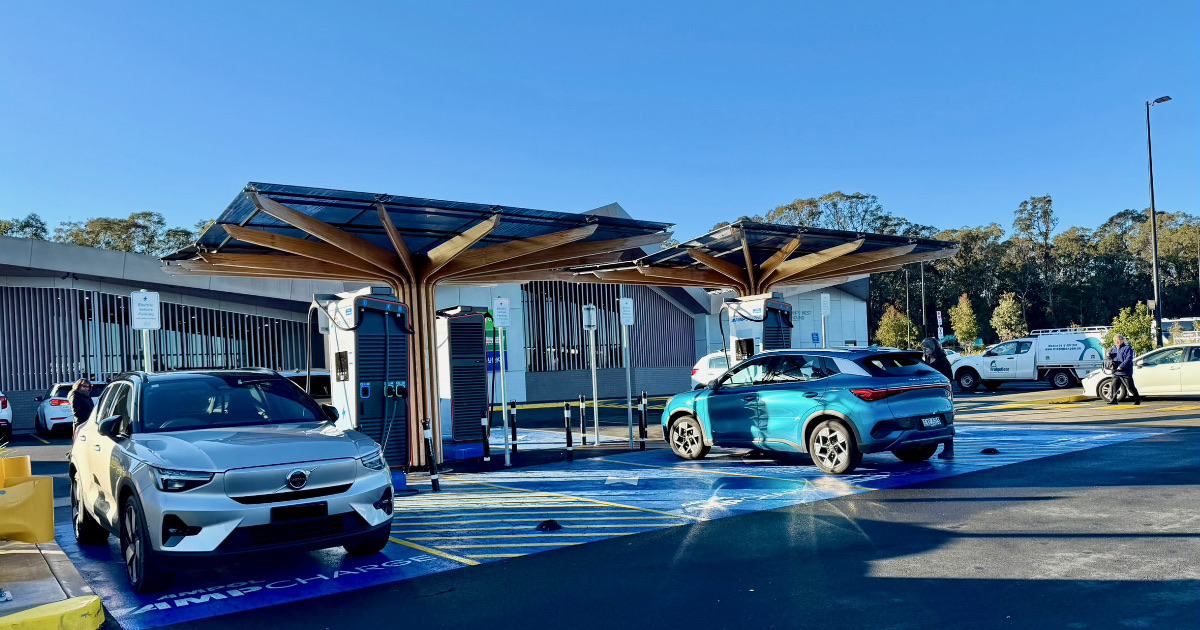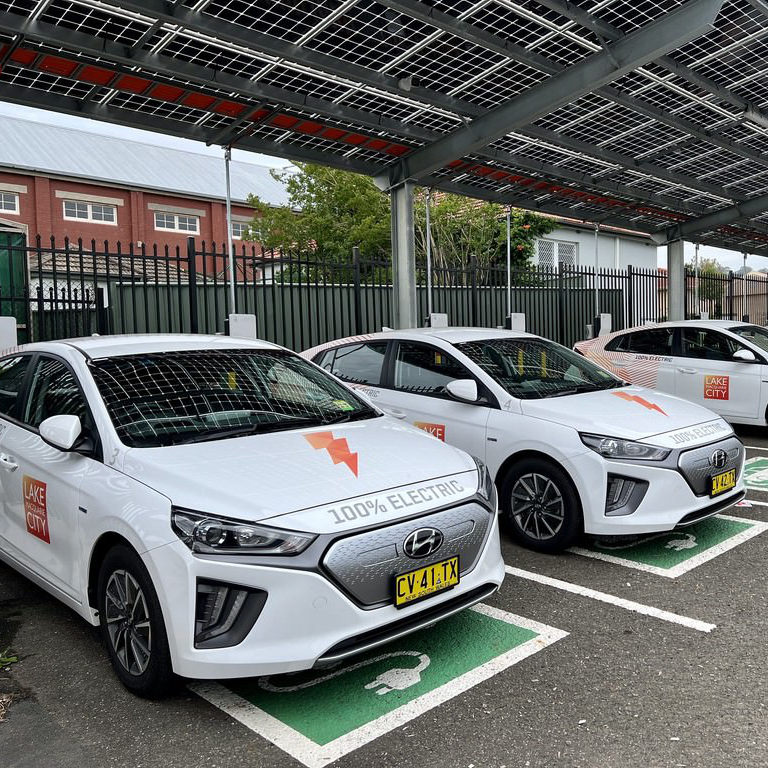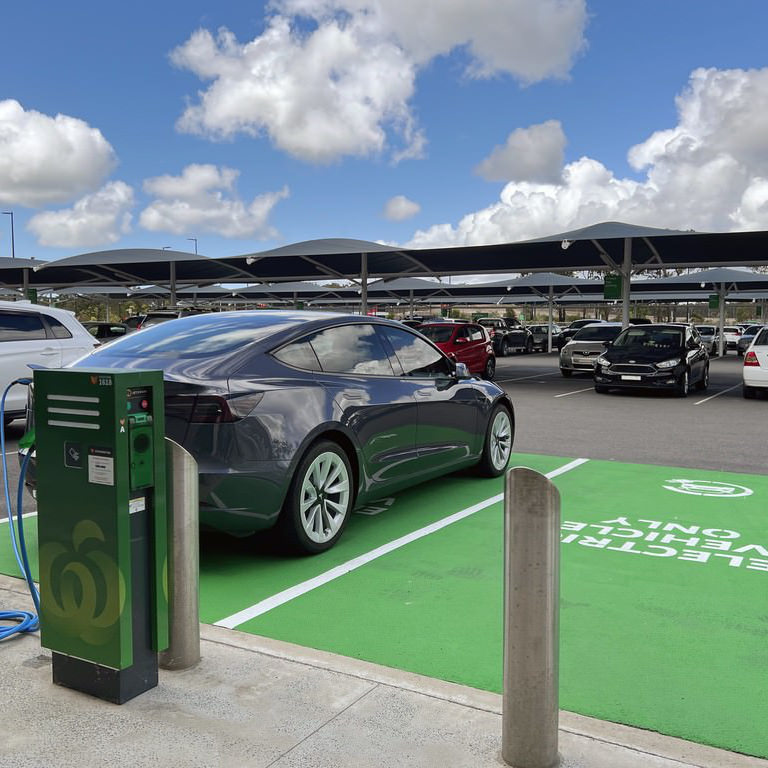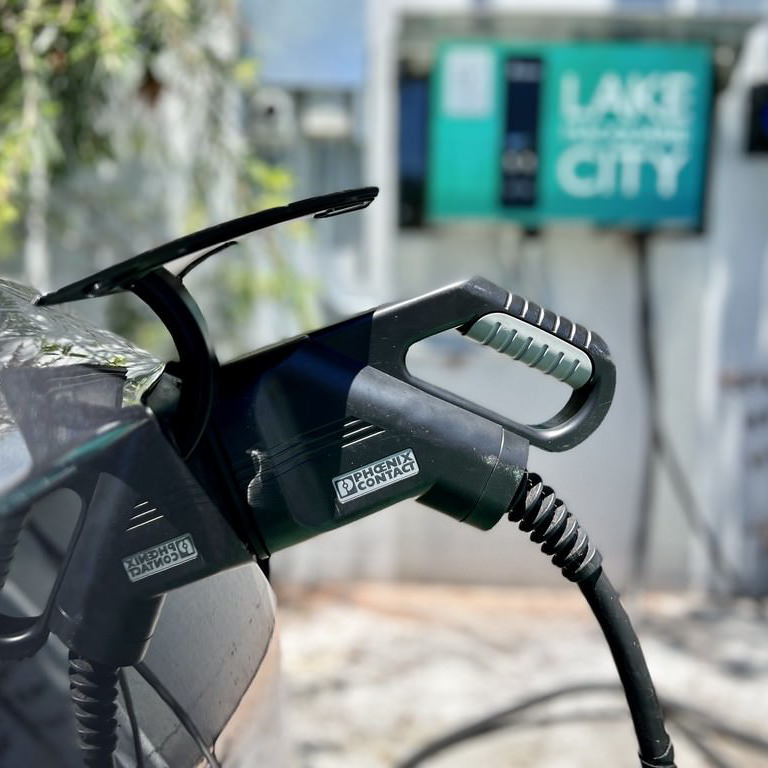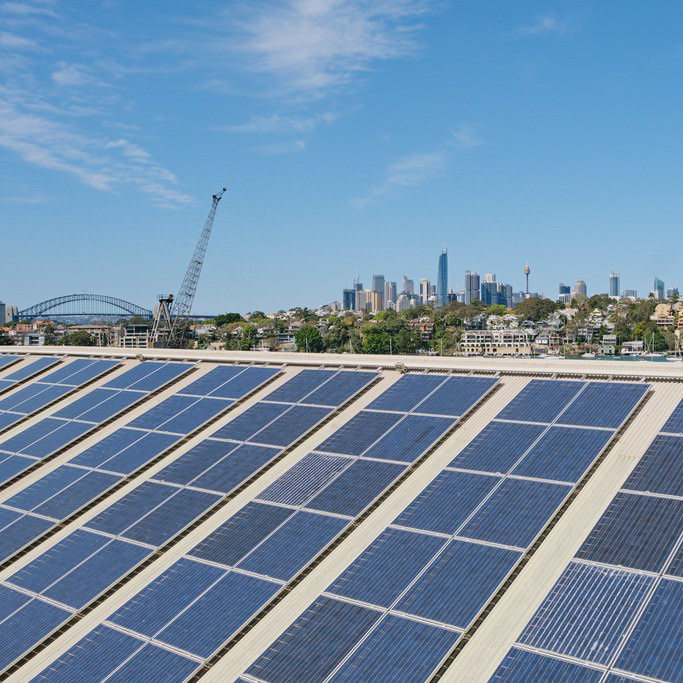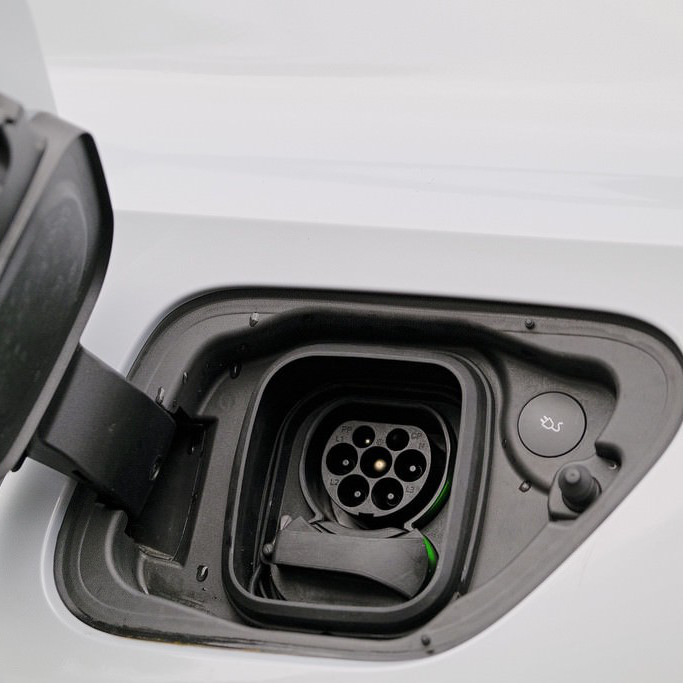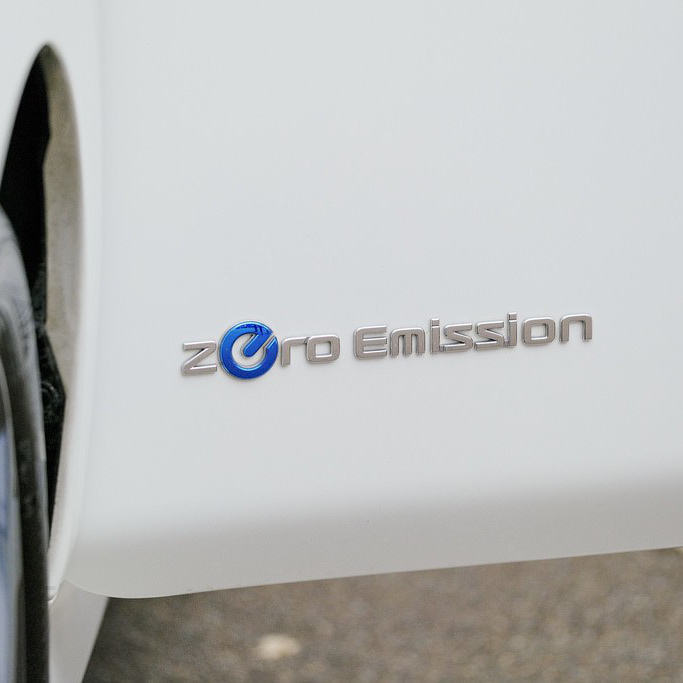Gosford to Canberra in Aussie Winter
Second trip with the Volvo to Canberra, again in winter, with 1°C Canberra mornings, now with wife and dog. The ACT is a 360km drive from the lower Central Coast where we are. Winter driving drops down EV range significantly, as does highway speeds. In that sense, EV driving discourages speeding, as tests have shown driving 130km/h (Euro speed) drops the Volvo’s range down to 279km, while at 110km/h (the max speed limit in NSW) shows a range of 320km. Volvo though is very truthful, not overpromising range (unlike I feel my Tesla did), showing me indeed about 320km at its 95% SOC, far less than the advertised 485km (in ideal conditions and mixed driving). But I already knew that from my previous trip.
Our first stop was a new (for me) fast charger along the way down to Canberra, at Ampol Pheasants Nest, both northbound and southbound directions offering 6 plugs each way, in a very European setup. Love it! We need more stops like this. On the way back home, we noticed (but too late) there was even an off-leash dog park! How cool and considerate is that? It was a quick coffee and pee break, 11 minutes for 16.74 kWh, enough to get us into Canberra without anxiety.
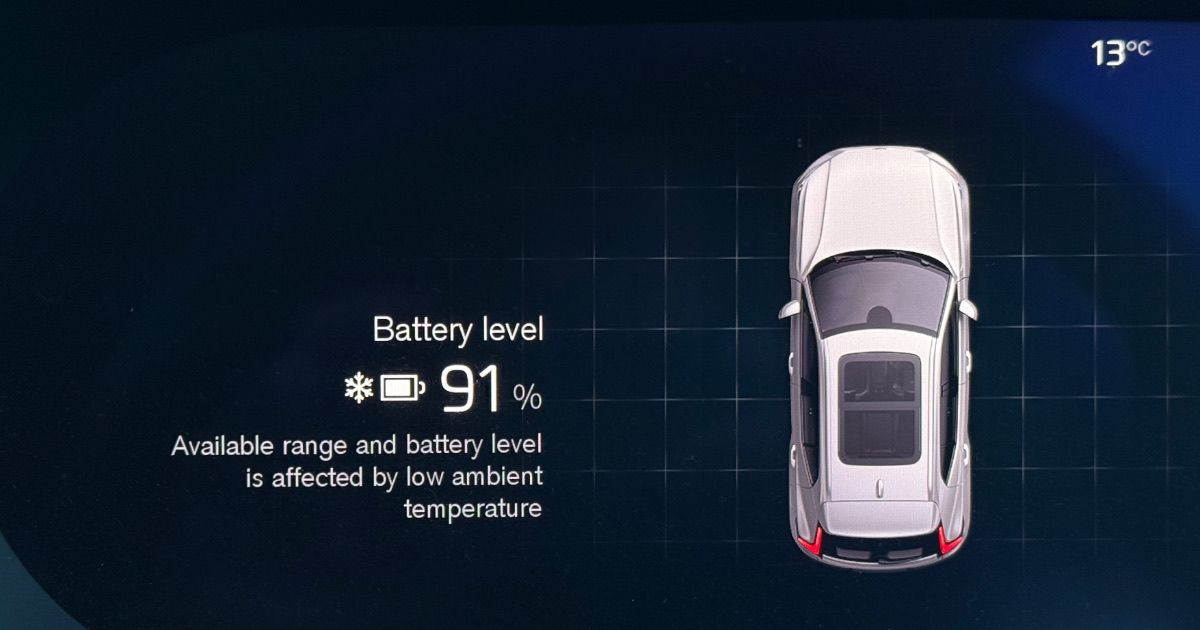 Weird thing is, this was at 13°C in Canberra. I never got this message even at 7°C in the morning on the Central Coast.
Weird thing is, this was at 13°C in Canberra. I never got this message even at 7°C in the morning on the Central Coast.
Canberra charging infrastructure
Once in Canberra, I wanted to top us up again (from 11% SOC), and stopped at a Chargefox/ENGIE charger which was advertised as a 150kWh charger, but it only provided 65 kWh. This was at a sports centre with no public ammenities.
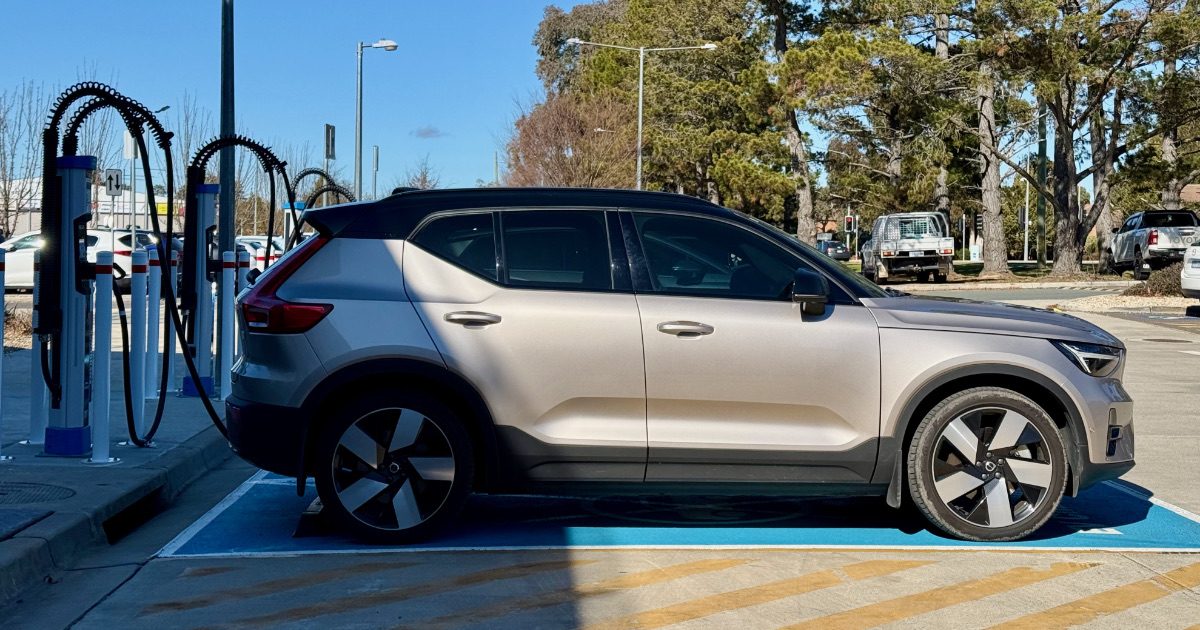 Chargefox
Chargefox
After 16 minutes (for 15.77 kWh) we unplugged and continued to the lake where we had a stroll followed by brunch (at On-Lake).
We still had time before our appointment, so we drove to an Evie charger in Fyshwick fresh food market — unfortunatly closed at this time — where we charged for 21 min (for 25.5 kWh).
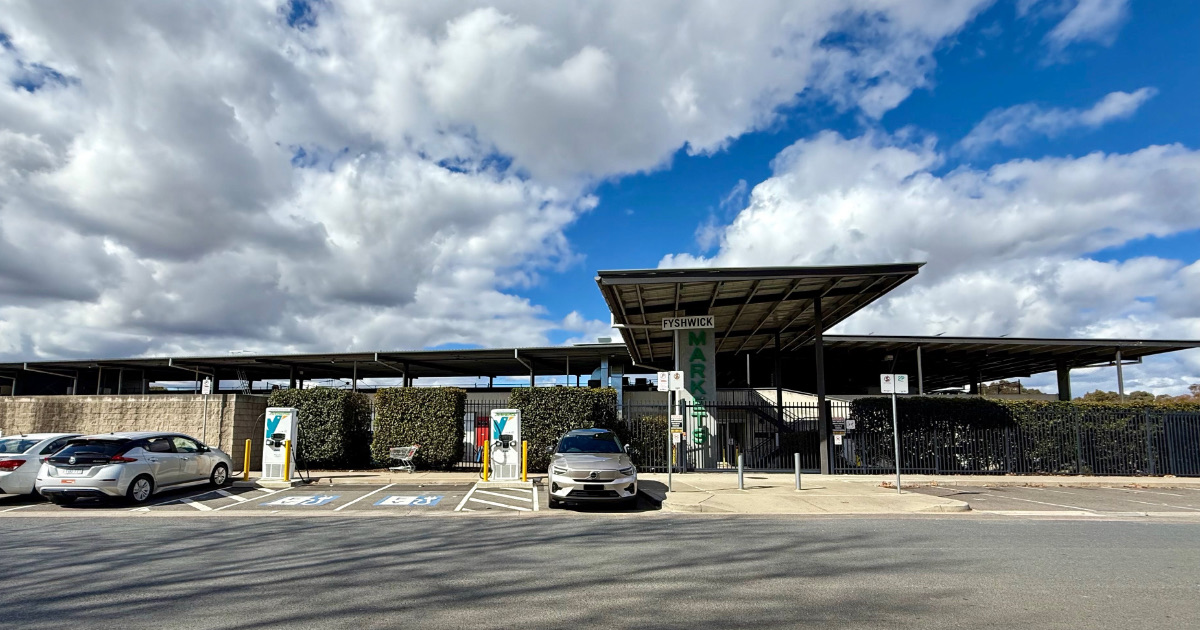 Evie Fyshwick
Evie Fyshwick
After our appointment, we visited Mount Ainslie Lookout, and then checked into the hotel. Mercure Canberra has two Exploren byo-cable chargers (at a slow AC 7.3kW/h), of which one was ICEd (boo!). This hotel accommodates larger dogs like ours.
By now it was late afternoon. We went to the National Gallery of Australia Sculpture garden, followed by dinner at the lake. Back at the hotel after dinner, the single remaining EV spot was still available and I plugged in for the night.
Next day
The Volvo was fully charged (44 kWh delivered) in the morning. Or rather about 95%, as I try to avoid going full 100. I preconditioned the car while getting ready, and before breakfast vacated the EV spot. I didn’t even realise all cars’ windows were frozen up, as I saw people scraping of the ice. Something I didn’t need to do as I remotely preheated the car, which defrosted my windows.
We had a morning stroll with the dog along Lake Ginninderra, and then met up with family outside of Canberra. We ended up back in Canberra for fish and chips lunch at Snapper & Co. The sail club there happened to have another Exploren (AC 11kW/h) charger. Something I hadn’t looked into, but was a fortunate surprise. Canberra is well equiped with EV chargers. After lunch and a stroll around the lake, the Volvo was fully charged again (95% SOC) and ready for our trip back north to the Central Coast.
We skipped Gouldburn (and the new Tesla Supercharger at the Big Merino) again, and stopped at Evie Sutton Forest West for a 12 minute charge (for 17.4 kWh) and some snacks and drinks. I guess this new Tesla Supercharger with 20 stalls (the biggest in the southern hemisphere), which is open to all EV brands, will alleviate pressure on the Evie and Ampol motorway chargers.
About 35 minute later we stopped again at the AmpCharge Pheasants Nest for a toilet stop of 13 minutes and let the dog out (but we missed the off-leash dog park here). It was half-price Tuesday in August at Ampol AmpCharge, which was nice, only $4.68 for 12.64 kWh. I now was back at a 85% charge. I certainly didn’t need to stop from a battery SOC point of view. I really needed the toilet. We did notice one charger was out of service.
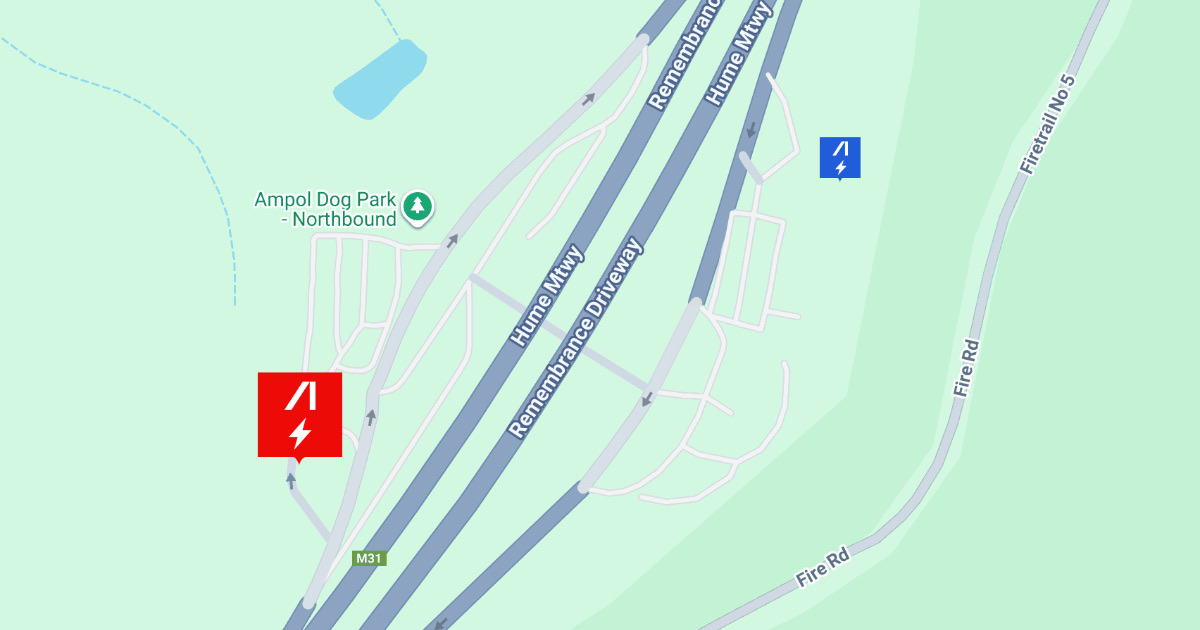 Ampol dog park location
Ampol dog park location
Then it was another 2h homeward stretch (in Western Sydney evening peak traffic) to the Central Coast, where we arrived with a 49% SOC at about 6pm.
Volvo eco mode
A thing I learned about the Volvo on this trip (which I didn’t realize last time). In combination with the in-car Google Maps, the car will enable an “eco” mode, dependent on the planned travel distance, arrival SOC and weather conditions. Before our first stop, I was using Google Maps on CarPlay (because I had trip planned on my iPhone), which annoyingly didn’t use the instrument cluster console. After the charge, using in-car Google Maps, the Volvo dropped down to an eco mode limiting full power acceleration, as the predicted arrival SOC was only 10%. The car itself doesn’t offer a selectable Eco mode like other brands (ex. Tesla’s Chill mode), it only has Standard and Off-Road modes.
Conclusion
The trip was uneventful. Yes, road tripping in an EV is different (but oh so smooth):
- it requires a bit of planning. For example, ideally your hotel would have EV chargers. You want to know what fast charging options are available along your route and at your destination. This time around, I learned about some new fast charger options.
- all EVs have different range and efficiency, and handle cold better or worse, which mean you may need to charge more often. You need to be aware of your car’s limits.
- different chargers use different apps or RFID cards. Make sure they are all set up before you start your trip. Check if you’re logged in, and your payment information is up to date. In fact, because I don’t use Exploren chargers often, my Exploren app did have old CC details which I needed to update on the spot. Check out this article about different charging apps.
In Europe, the charging networks have “roaming” implemented, allowing you to use different networks on one app, without needing multiple accounts. Evie might be working on something similar. - some AC chargers require you to bring your own AC charging cable, like the Exploren ones.
- some chargers apply congestion and idle fees, especially at Tesla Superchargers. Keep charging etiquette in mind, or pay more for your charging session.
In an ICE car, you’d filled up the tank at the start, and probably again once driving back home. But at no point do I feel we really wasted time charging.
I’d still wouldn’t go back to ICE again.
Some numbers
From my receipts:
Day One:
| Location | Cost | kWh | Duration |
|---|---|---|---|
| AmpCharge (Pheasants Nest) | $12.55 | 16.74 kWh | 11 min on DC |
| Chargefox (ENGIE, Next Gen sports centre) | $10.88 | 15.77 kWh | 16 min on DC |
| Evie (Fyshwick Fresh Food Markets) | $16.12 | 25.5 kWh | 21 min on DC |
| Exploren (Mercure) | $14.56 | 44.13 kWh | 11h13m on AC |
Day Two:
| Location | Cost | kWh | Duration |
|---|---|---|---|
| Exploren (Sailclub) | $7.89 | 15.78 kWh | 1h26m on AC |
| Evie (Sutton Forest West) | $12.18 | 17.4 kWh | 12 min on DC |
| AmpCharge (Pheasants Nest) | $4.68 | 12.64 kWh | 13 min on DC (half price Tuesdays) |
| Evie (Erina) | $10.61 | 20 kWh | 16 min on DC |
Drove 835km, charged 167.77 kWh, payed $89.47. Averaged paid $0.53/kWh (which is quite low), used 20kWh/100km (the Volvo isn’t the most efficient EV for sure), which is $10.6/100km.

